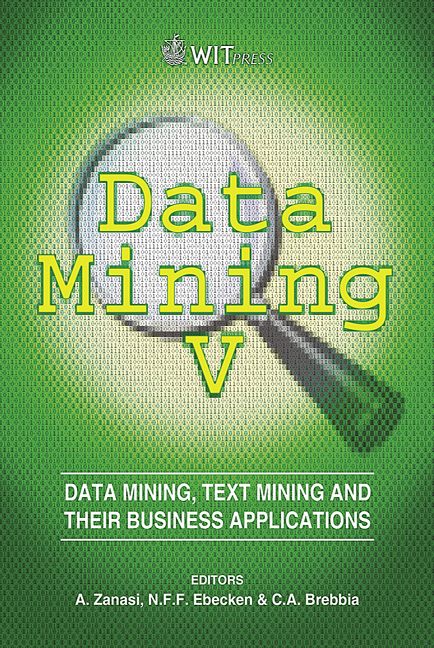A Data Mining Approach To Landslide Prediction
Price
Free (open access)
Volume
33
Pages
10
Published
2004
Size
721 kb
Paper DOI
10.2495/DATA040411
Copyright
WIT Press
Author(s)
F. T. Souza & N. F. F. Ebecken
Abstract
The study of landslides is a very difficult task due to the huge space-temporal variety of the involved parameters. The study of Rio de Janeiro’s city landslide problem has been performed by a Data Mining approach. The dataset related to the landslides registers between 1998 and 2001, including meteorological and soil parameters, are the basis of this work. The cumulative rain patterns related to the landslides depend on the missing data replacement, which was analyzed by several methods, including Clustering and Statistical Analysis. The rain spatial analysis selected the rain gauges to be input on Neural Networks (NN), which were used to replace the missing rain values. The landslide volume variable also presents missing values and their completion has been performed by a K-nearest neighbor method. After data preparation, some models (using NN, Interesting Association Rules and Classification Rules) were built to predict the accidents and rainfall, improving the existing alert system. Keywords: data mining, geographical information systems (GIS), landslides. 1 Introduction The decontrolled urbanization process in the large cities imposes alterations in the environmental nature equilibrium. Many areas near the slopes are occupied by a vast part of population and these occupations promote the deforesting, soil vegetable cover destroying, garbage accumulation, etc. The new atypical conditions impose a new setup of the soil hillsides, which turned it susceptible to the occurrences of landslides during the rainfall. Studies Menezes et al [1] have been shown that Rio de Janeiro’s city has physical characteristics (geographical position and topography) and atmospherically patterns favorable to development of meteorological phenomenon that causes the rainfall. The summer months are rainy and more than 60% of the landslides generally occur during these months.
Keywords
data mining, geographical information systems (GIS), landslides.





